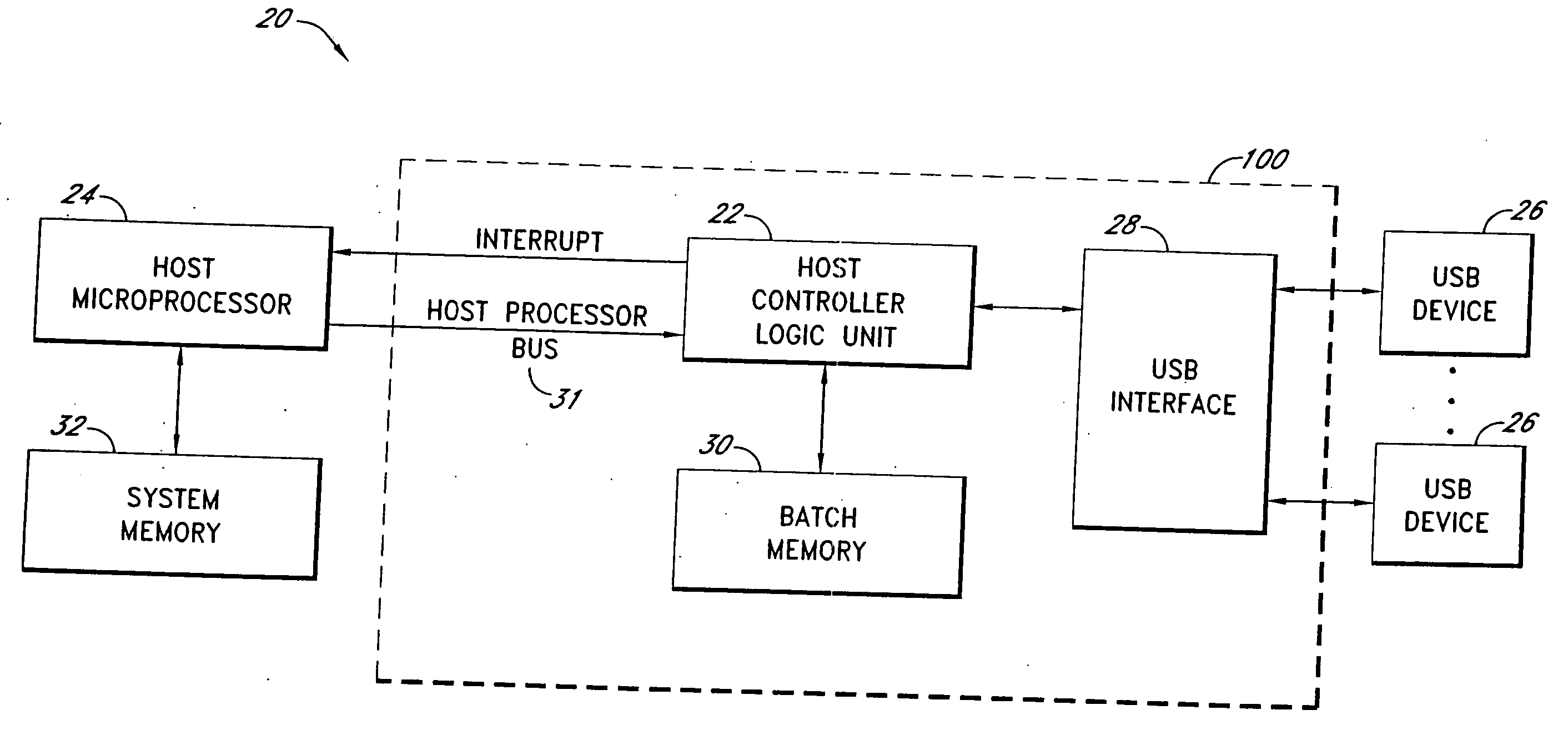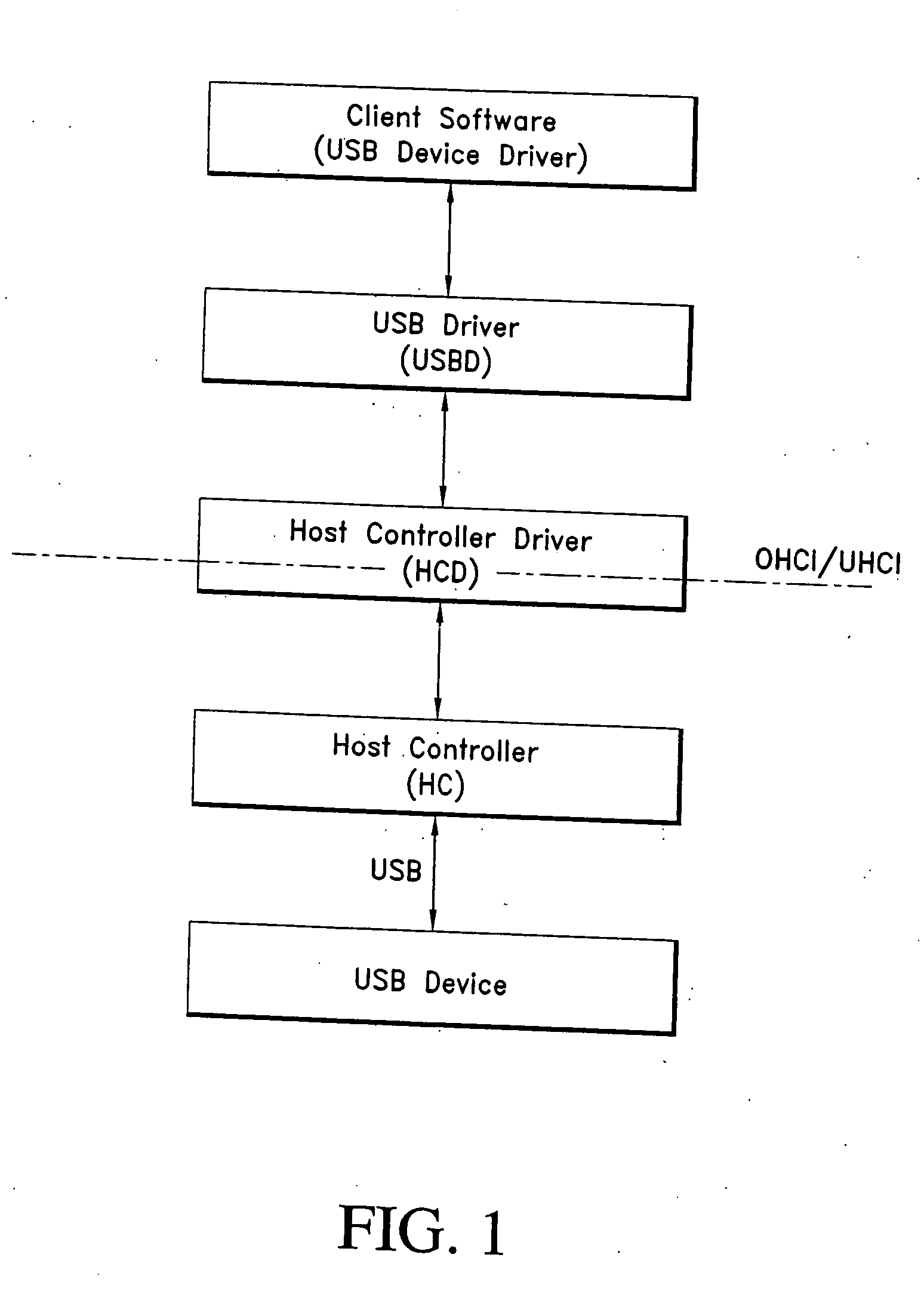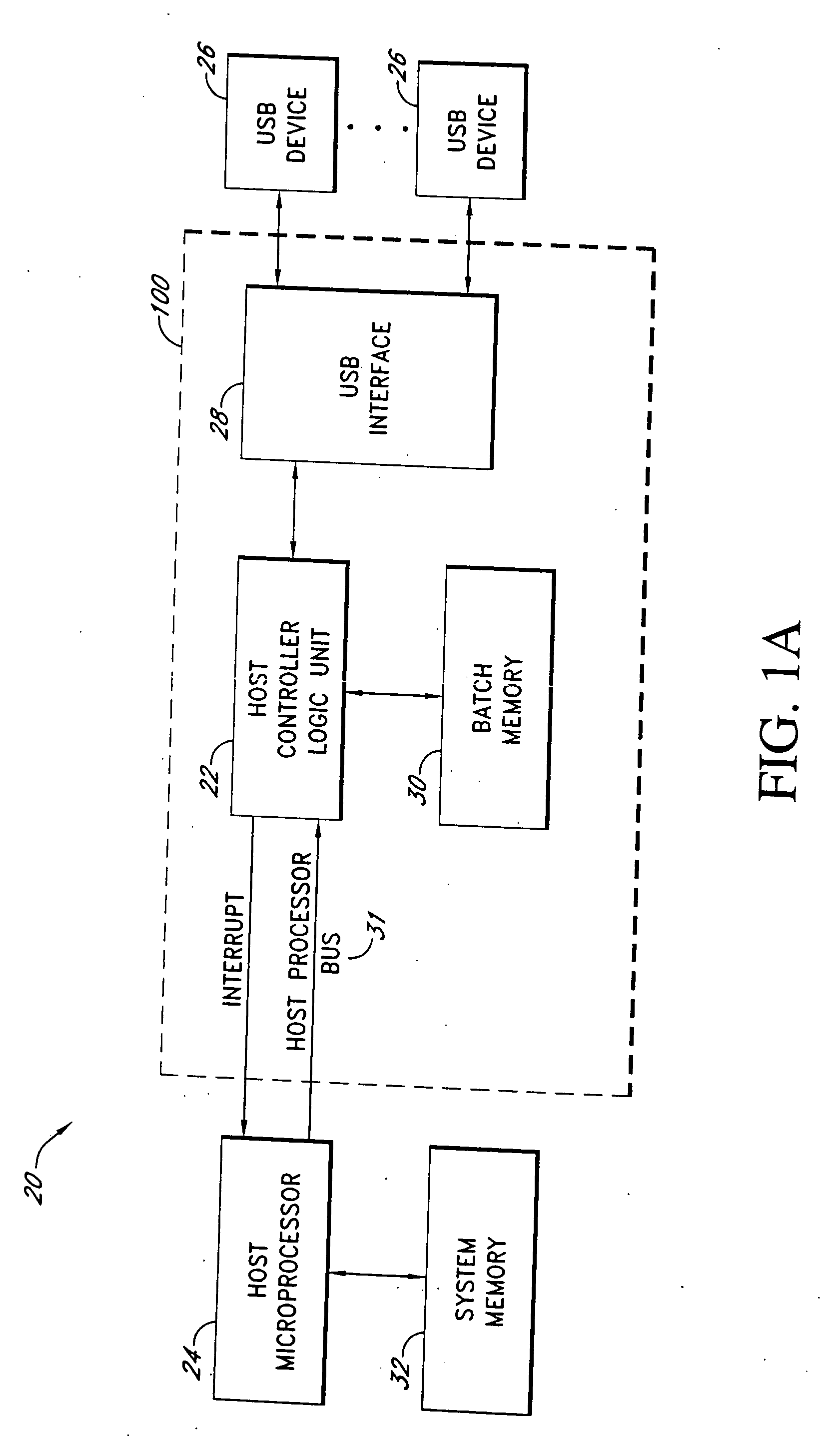Systems and methods for batched USB data transfers
a technology of usb data transfer and host controller, applied in the direction of electric digital data processing, instruments, etc., can solve the problems of low data transfer rate, frequent interrupts, and microprocessor interrupt latency, so as to reduce the overall resource demand and increase data throughput
- Summary
- Abstract
- Description
- Claims
- Application Information
AI Technical Summary
Benefits of technology
Problems solved by technology
Method used
Image
Examples
Embodiment Construction
Reference will now be made to the drawings wherein like numerals refer to like parts throughout. As discussed above, FIG. 1 is a block diagram of a typical USB system. The typical USB system includes a software component comprising the client software, the USB driver and the host controller driver. These drivers are generally resident on the host microprocessor and allow for the data transfer between the host system and the peripheral devices. As is illustrated in FIG. 1, the typical USB system also includes a hardware implemented host controller that communicates with the host microprocessor using the software drivers. The typical USB system permits two way transfer of data between the memories associated with the host system and the peripheral devices. In other words, data can either be transferred from the peripheral device to the host device, e.g., such as when a scanned image is being transmitted from a scanner to a host computer for storage in memory, or data can be transferr...
PUM
 Login to View More
Login to View More Abstract
Description
Claims
Application Information
 Login to View More
Login to View More - R&D
- Intellectual Property
- Life Sciences
- Materials
- Tech Scout
- Unparalleled Data Quality
- Higher Quality Content
- 60% Fewer Hallucinations
Browse by: Latest US Patents, China's latest patents, Technical Efficacy Thesaurus, Application Domain, Technology Topic, Popular Technical Reports.
© 2025 PatSnap. All rights reserved.Legal|Privacy policy|Modern Slavery Act Transparency Statement|Sitemap|About US| Contact US: help@patsnap.com



